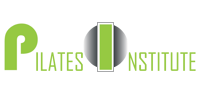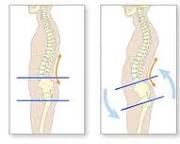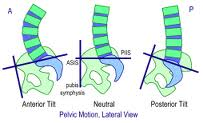Back Pain with Exercise
Do you ever have that achy pain sensation or irritation during/after your exercise program? Often people complain of discomfort/pain, when doing an abdominal strengthening program specifically. Here are some common reasons for back discomfort and ways you can minimize or even get rid of that pain completely!!
The importance of a neutral spine/pelvis
Positioning of the spine is critical. Most people tend to do strengthening activities in what we call a posterior pelvic tilt position (illustration #2, 3rd box). This position is when you’ve tilted your pelvis back and have flattened it into the mat. This position causes increased compression on one aspect of the disc. When the spine is in a neutral position, compression is equalized, decreasing back discomfort, while promoting a strong, and healthier, posture!
Take a look at the non-compressive forces (box 1) & the compressive forces (box 2) in the following illustration:
Look at what occurs to the discs when the
spine is not in neutral… Compression!!
Here is another look at 3 different Lumbar Spine/Pelvis positions. More often than not, people exercise in the right positions. However, if you focus strengthening in the center/neutral position, you will take away those compressive forces and decrease the chances of discomfort and pain :
In the left illustration, we see an anterior tilt, meaning that the lumbar spine arches and the pubic symphysis drops below the ASIS (front hip bones)..
In the right illustration, we see a posterior tilt, meaning the lumbar spine flattens out and the pubic symphysis raises above the ASIS (front hip bones).
Lastly, in the center illustration, we see a neutral spine/pelvis resulting in a natural curve in the lumbar spine where the pubic symphysis and the ASIS become level to one another.
At Pilates Institute, we encourage our clients to think of the pelvis as a triangle… all 3 points of the triangle should be on the same plane.
The neutral spine/pelvis is ideal and should be maintained throughout any strengthening program. Not only is it the safest for you spine, but it actually allows you to activate your inner core muscles better! We will hit the topic of those muscles at a later date, but if you want to take a quick peek on my Anatomy & Physiology website page, you will learn about the abdominals and how to integrate them into your exercise program!
Claire Jeppson, PPI & PTA


